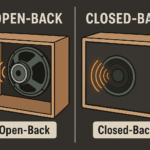Songwriting is a beautiful form of self-expression and communication with the world. As a songwriter, one of your main goals is to create music that captivates and engages your audience. However, in a sea of songs, it’s easy to get lost in the noise if your compositions lack novelty and excitement.
To prevent this, you must continually challenge yourself to keep your songwriting fresh, interesting, and compelling. In this blog post, we will explore some effective techniques that can help you maintain interest in your songwriting journey.
1. Start with a Strong Concept
Every great song is built upon a foundation of a powerful concept or story that resonates with both the songwriter and the audience. Before embarking on the composition process, take the time to delve into your thoughts, feelings, and experiences.
Draw inspiration from real-life events, personal struggles, or even from observing the world around you. By tapping into authentic emotions, you infuse your lyrics with sincerity, making them more relatable and compelling for listeners.
A strong concept not only provides direction to your song but also helps you maintain focus throughout the writing process. It serves as a guiding light, steering your melodies, harmonies, and instrumentation towards a unified message or theme. This focus prevents your song from becoming disjointed or meandering, capturing the essence of what you want to convey.
Moreover, a well-crafted concept has the power to set your song apart from others in the crowded music landscape. It allows you to explore unique perspectives or narratives, breathing fresh life into your music. Daring to be different and bringing a distinct voice to your songwriting can pique the curiosity of your listeners and leave a lasting impression on them.
Incorporating a strong concept into your songwriting doesn’t mean your themes have to be overly complex or profound. Even simple stories or emotions can be compelling if delivered with authenticity and vulnerability. Sometimes, the most impactful songs are those that resonate on a personal level with the listeners, making them feel seen and understood.

2. Experiment with Song Structures
While the traditional verse-chorus-verse structure has been the backbone of countless successful songs, don’t limit yourself to this formula. Embrace experimentation with different song structures to inject freshness and unpredictability into your music.
Whether it’s a bridge that takes a detour from the established melody or a pre-chorus that sets up a powerful hook, exploring alternative arrangements can breathe new life into your compositions.
One approach to experimenting with song structures is to think of your song as a musical journey. Consider how you want to guide your listeners through various emotional peaks and valleys, much like a rollercoaster ride. Mixing up the order of your song’s sections can create a sense of surprise and anticipation, drawing your audience into your musical narrative.
Moreover, playing with song structures can enhance the storytelling aspect of your music. For instance, adopting a non-linear approach to depict a memory or a dream sequence can add an evocative and cinematic quality to your song. This kind of experimentation can help you break free from conventional songwriting norms and open up a world of creative possibilities.
However, while it’s essential to experiment, remember to maintain a sense of coherence in your song. Strive for a balance between novelty and familiarity, so your listeners can still connect with the core elements of your composition while appreciating the fresh twists you’ve introduced.

3. Utilize Dynamic and Contrast
Dynamic range is a powerful tool that can significantly impact the emotional impact of your song. Incorporating varying degrees of volume, intensity, and instrumentation can add depth and texture, making your music more engaging and evocative.
Think of dynamics as a way to convey the emotional journey of your song. Starting with a soft and gentle verse can create an intimate atmosphere, drawing your audience in and setting the stage for what’s to come. Gradually building up to a powerful and anthemic chorus can unleash a surge of emotions, leaving a lasting impact on your listeners.
Contrast is another essential element in keeping your song interesting. By contrasting different sections of your song, you can create excitement and anticipation. For instance, transitioning from a sparse and stripped-down verse to a lush, instrumentally rich chorus can create a sense of elevation and release.
To effectively utilize dynamics and contrast, pay attention to the arrangement of your instrumentation. Experiment with different combinations of instruments to create distinct soundscapes for different sections of your song. By doing so, you can add layers of complexity to your music, captivating your audience and encouraging them to immerse themselves fully in your sonic world.
4. Incorporate Unique Melodies and Harmonies
A captivating melody is the beating heart of any memorable song. It’s the part that lingers in the minds of listeners, leaving them humming your tune long after the music has stopped. While crafting a strong melody may seem daunting, it’s essential to approach it with an open mind and a willingness to explore various musical avenues.
Start by experimenting with different note patterns and intervals to create melodies that are both catchy and emotionally resonant. Remember, simplicity can often be as effective as complexity. Many iconic melodies are based on straightforward, memorable sequences that stick with the listener.
Consider the role of harmonies in adding depth and dimension to your song. Harmonies are additional vocal or instrumental lines that support and enrich the main melody. They can elevate your music to new heights by creating a lush and immersive sonic experience.
While harmonies are commonly associated with vocals, they can also be incorporated into instrumental arrangements. Playing with different harmonic progressions and layering can give your music a sophisticated and captivating quality.
When exploring melodies and harmonies, don’t hesitate to push the boundaries and challenge traditional norms. Experiment with unexpected twists and turns, explore unusual scales or modes, and mix different musical influences to create a unique signature sound that sets you apart as a songwriter.

5. Explore Diverse Instrumentation and Production
To keep your songwriting fresh and interesting, it’s essential to break free from the confines of familiar instrumentation and production techniques. Embrace a spirit of exploration and curiosity by incorporating diverse instruments and experimenting with innovative production styles.
Think beyond the traditional guitar-bass-drums setup and consider introducing electronic elements, ethnic instruments, or even unconventional sounds like samples from everyday life. Such experimentation can give your music a distinctive character, making it more memorable for your audience.
Collaboration can be an excellent way to expand your musical horizons. Partnering with other musicians or producers who bring different perspectives and expertise to the table can lead to exciting new musical directions. Their input might inspire you to take your songs in unexpected yet fascinating directions, enhancing the overall creative process.
Remember that the production of your song can also greatly impact its overall appeal. Use production techniques to create atmosphere and mood, amplifying the emotional message of your song. Whether it’s experimenting with ambient textures, incorporating intricate layering, or using creative effects, your production choices can elevate your songwriting to new heights.
As you venture into diverse instrumentation and production, remain mindful of the song’s core essence. The experimentation should serve to enhance and complement the song’s central theme and message rather than overshadowing or diluting it.
6. Play with Rhythms and Grooves
Rhythm is the heartbeat of a song, and playing with different rhythmic patterns and grooves can add excitement and dynamism to your music. Whether it’s a driving beat that makes your listeners want to move or intricate percussive arrangements that add layers of complexity, rhythmic experimentation can elevate your songwriting to a whole new level.
Syncopation, which involves placing accents on unexpected beats, is a fantastic way to inject unpredictability and energy into your compositions. By disrupting the regular flow of the rhythm, you create an element of surprise that keeps the audience engaged and attentive.
Unexpected pauses or rhythmic variations can also create a sense of tension and release, leading to a more engaging and memorable musical experience. These subtle changes in rhythm can be used strategically to highlight important moments in your song, such as before a significant lyrical or melodic change.
Consider the genre and mood of your song when experimenting with rhythms and grooves. Different styles of music may lend themselves to specific rhythmic patterns, so be sure to explore a wide range of possibilities that align with the overall vibe you want to convey.
7. Focus on Effective Lyrics
The power of effective lyrics cannot be overstated. A well-crafted lyrical narrative has the ability to touch the hearts and minds of listeners, forging a deep connection between the songwriter and the audience. When crafting your lyrics, strive to communicate your message clearly while leaving room for interpretation and personal resonance.
Start by exploring themes that are meaningful to you personally or that address relevant social or emotional topics. Whether it’s a personal reflection on life’s struggles or a call for positive change in the world, infusing your lyrics with authenticity and depth will make them more relatable and impactful.
Poetic devices such as metaphors, similes, and allegories can add layers of complexity and imagery to your lyrics. They provide a fresh perspective on familiar topics and spark the imagination of your listeners. Be creative with your use of language, finding unique ways to express emotions and ideas.
Avoid falling into cliches or overused phrases. Instead, strive for originality and a fresh take on common themes. Dare to express yourself in a way that hasn’t been heard before, and your lyrics will stand out and make a lasting impression on your audience.
Remember that lyrics and melody are inherently intertwined. The musical phrasing of your lyrics can greatly impact the overall flow and emotional impact of your song. Experiment with different melodic patterns that complement the lyrics, ensuring that the music enhances the message you wish to convey.

8. Embrace the Element of Surprise
One of the most powerful tools in a songwriter’s arsenal is the element of surprise. Introducing unexpected twists and turns can keep your audience on their toes, eager to discover what lies around the musical corner. Surprise doesn’t mean being random; rather, it involves cleverly breaking patterns or deviating from expectations to captivate your listeners.
Incorporate surprising melodic intervals, unconventional chord progressions, or unexpected shifts in dynamics to add intrigue and excitement to your music. When done effectively, these surprises can create memorable moments that linger in the minds of your audience.
Surprises can also manifest in your lyrical content. Think of unexpected plot twists, ambiguous or thought-provoking lines, or clever wordplay that challenges the listener’s perceptions. By keeping the audience engaged and guessing, you maintain their interest throughout the song.
However, remember to balance surprise with coherence. Ensure that your surprises contribute to the overall flow and theme of your song rather than feeling forced or out of place. Cohesion is essential in delivering a satisfying musical experience to your audience.
Conclusion
Songwriting is a journey of creativity, emotion, and self-discovery. To keep your music interesting and engaging, challenge yourself to explore new territories, experiment with various techniques, and infuse your unique voice into every composition.
Starting with a strong concept provides a clear direction for your song and sets the stage for a captivating musical narrative.
Experimenting with song structures, dynamics, and contrast ensures your music remains fresh and unpredictable, leaving your listeners eager for more.
You create a distinctive signature sound that sets you apart as an artist by incorporating unique melodies, harmonies, diverse instrumentation, and innovative production.
Playing with rhythms and grooves adds energy and excitement, making your songs irresistible to the audience.
Effective lyrics add depth and meaning, forging a deep connection between you and your listeners.
Finally, embracing the element of surprise keeps your music intriguing and leaves a lasting impact on those who experience it.
Through a combination of creativity, passion, and boldness, you can continually evolve as a songwriter and create music that touches the hearts and souls of your audience. Happy songwriting!
-
 Fender Acoustasonic Standard Telecaster in Black£0.12Per Entry
Fender Acoustasonic Standard Telecaster in Black£0.12Per Entry -
 Fender American Ultra HSS Stratocaster in Texas Tea£0.99Per Entry
Fender American Ultra HSS Stratocaster in Texas Tea£0.99Per Entry -
 Gretsch Jim Dandy Parlor in Frontier Stain£19.99Per Entry
Gretsch Jim Dandy Parlor in Frontier Stain£19.99Per Entry -
 Epiphone Inspired By Gibson Custom 1963 Firebird I in Inverness Green£0.20Per Entry
Epiphone Inspired By Gibson Custom 1963 Firebird I in Inverness Green£0.20Per Entry -
 Gibson Les Paul Studio in Wine Red Satin£0.80Per Entry
Gibson Les Paul Studio in Wine Red Satin£0.80Per Entry -
Product on sale
 Christmas Instant Win Clearout – £30,000 of Prizes! 25% Off Tickets For 1 Week OnlyOriginal price was: £0.70.£0.50Current price is: £0.50.Per Entry
Christmas Instant Win Clearout – £30,000 of Prizes! 25% Off Tickets For 1 Week OnlyOriginal price was: £0.70.£0.50Current price is: £0.50.Per Entry -
 Boost Your Odds – Win Tickets Instantly!£1.99Per Entry
Boost Your Odds – Win Tickets Instantly!£1.99Per Entry -
 Taylor GS Mini-e Special Edition Electro-Acoustic in Silverburst£0.99Per Entry
Taylor GS Mini-e Special Edition Electro-Acoustic in Silverburst£0.99Per Entry -
 Jackson SL7Q Pro Soloist in Alien Burst Green£2.99Per Entry
Jackson SL7Q Pro Soloist in Alien Burst Green£2.99Per Entry







